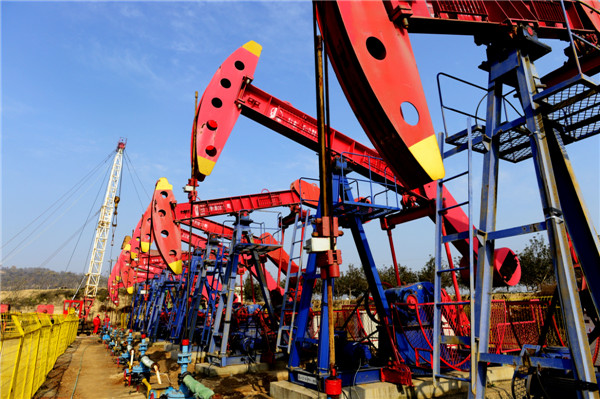U.S. is replacing Russia as EU's main energy supplier as crude oil and gas exports soar

The Russia-Ukraine conflict has changed the EU's energy import ecology, and the United States is replacing Russia as the EU's main source of oil and gas.

U.S. crude oil exports to Europe reached a two-year high last December 2022 as an EU embargo on maritime shipments of crude oil to Russia took effect. Industry sources predict that more U.S. crude oil will enter the European market this year.
On the natural gas front, the U.S. jumped to become the world's second-largest exporter of LNG last year as exports to Europe surged. Shell's latest outlook predicts that Europe will still need large amounts of LNG to fill the Russian gas gap this year.
In an interview with Reuters on Feb. 17, 2023, Colin Parfitt, vice president of Chevron Midstream, said the global flow of crude oil is changing and a key change is the influx of U.S. crude to Europe. Parfitt believes that more U.S. crude will be shipped to Europe due to the shortage of Russian crude supplies in Europe this year. Crude oil exports from the U.S. to Europe rose to nearly 1.69 million barrels per day last December 2022, the highest in two years, according to Kpler, a commodities data analyst. The agency's data show that U.S. crude oil exports to Europe continued to climb from March to December last year 2022 after the start of the Russia-Ukraine conflict, peaking in December. By January of this year 2023, U.S. crude oil exports to Europe edged down to 1.5 million barrels per day. And in December 2021, U.S. crude oil exports to Europe were 1.09 million bpd.

Kpler estimates that U.S. crude oil exports rose to 3.4 million barrels per day for the entirety of last year, surpassing pre-New Crown epidemic levels to reach the highest in recent years due to strong European demand. Some U.S. agencies predict that the country's crude oil exports will exceed imports this year, and the U.S. will become a net exporter of crude oil for the first time since World War II.
The increase in exports comes at a time when the destination of U.S. crude oil exports is changing.
The latest data from the U.S. Energy Information Administration (EIA) shows that the top five destinations for U.S. crude oil exports in 2021 are India, South Korea, Canada, the Netherlands and China. Data from the U.S. Census Bureau shows that in the first three quarters of last year, U.S. crude oil exports were 3.5 million barrels per day, up 19% from the same period in 2021. While Asia remains an important destination for U.S. crude oil exports, Europe's share is rising rapidly. In the first three quarters, U.S. crude oil exports to Europe rose 452,000 barrels per day to 1.46 million barrels per day, accounting for 41% of total exports. data from Eurostat also show that the U.S. is becoming a key source of oil for the EU. in 2021, 24.8% of the EU's oil imports came from Russia, followed by Norway (9.4%) and the U.S. (8.91 TP3T). But by the third quarter of last year, Russia's share dropped to 14.41 TP3T, while the U.S. rose to 11.91 TP3T, surpassing Norway in second place.
On the natural gas front, the U.S. jumped to become the world's largest LNG exporter in the first half of last year thanks to soaring EU demand. However, in June last year, Freeport LNG's natural gas export plant in Texas was closed due to a fire, and repairs continued until January this year, affecting U.S. LNG exports. According to Refinitiv, a financial information services company, it was the fire that prevented the U.S. from becoming the world's largest exporter of LNG. But the country still ranked second in exports for the whole of last year, slightly below Australia and ahead of Qatar.
Some 69% of U.S. LNG exports went to Europe, up from 35% in 2021, EIA data show, with U.S. LNG export revenues exceeding $35 billion in the first three quarters of last year, compared with $8.3 billion in the same period in 2021. Bloomberg, for its part, estimates that U.S. LNG exports reached 81.2 million tons last year, tied with Qatar, with the two countries tied for the world's largest LNG exporter. For the EU, the U.S. is filling the void left by Russia as one of the region's key sources of natural gas.

Eurostat records show that in 2021 the EU had 39.3% of gas imports from Russia, followed by Norway, Algeria and the U.S. The U.S. contributed only 7.1%. But by the third quarter of last year, Norway and the U.S. rose to 30.8% and 15.2% respectively, ranking the top two; Russia's share fell to 15%, ranking ranking third.
The European Union survived the warm winter last year in 2022 by saving energy and increasing imports of liquefied natural gas. But a forecast released this week by Shell Group argues that the EU will face the challenge of replenishing its gas stocks this year as stocks run out and the energy crisis is far from over. The report predicts Europe will need 140 million tons of LNG by 2030, far more than the 50 million tons in 2018.
While European demand is growing, the new LNG plant in Australia will not be operational until 2026 and the new facility in Qatar is expected to be operational in 2025. And with new plants in Texas and Louisiana scheduled to begin shipping next year, the U.S. will also continue its role as a key LNG source for the EU in the near term.
If you want to pay attention to the latest trends in the international oil industry, and want to get more information about the industry, you can attend international professional oil and gas related exhibitions, click on the link below to learn more about the exhibition. Click on the links below to learn more about these events. Feel free to contact us or send us a message and we will contact you as soon as possible!
https://worldexpoin.com/expos-list/?category=offshore-technology-expo&sort=latest


